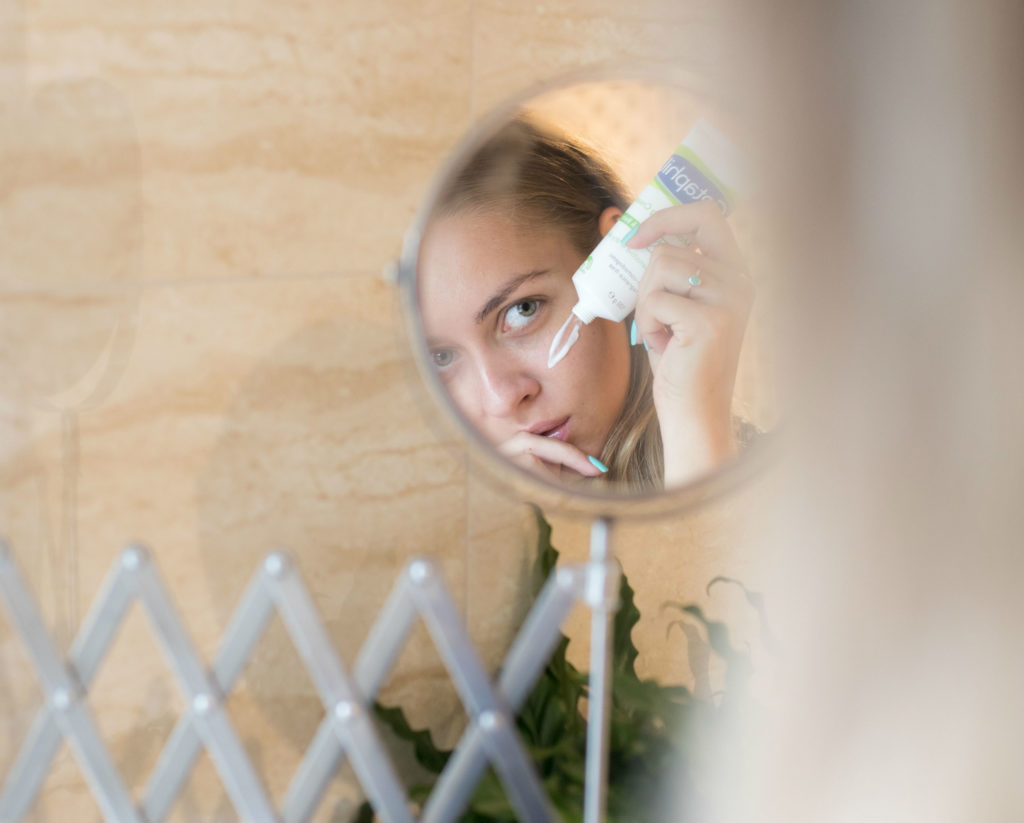
Can I use body cream on my face? In our latest Science of Beauty column, we investigate the facts.
Beaut's science expert Dr Regina Kelly is a Science Educator and a Dean’s Postdoctoral Fellow in STEM Education at EPI*STEM, the National Centre of STEM Education, School of Education, Faculty of Education and Health Sciences, University of Limerick.
There seems to be a cream or lotion for every body part. Are all these types of creams really necessary? I would never use a hand cream on my face, but I have certainly used a face cream near my eye area. Pharmacist Una Smyth explains what is in each of these creams and the reason why some are more expensive than others.

Face Creams and Body Lotions
Face creams and body moisturisers are made differently, and for very good reasons. The skin on your face is much thinner than on the body. It tends to contain more oil glands, than, say, the hands or feet and is also exposed to harsher elements of nature and sun, while the body is generally covered by clothes. For these reasons, facial skin can be more prone to problematic skin conditions and requires extra protection.
Body creams often use heavier moisturisers like mineral oils and petroleum. Although these create excellent skin barriers to keep skin from losing moisture, they are too heavy for the delicate nature of facial skin. So while the primary function of body creams is to relieve dry skin, facial creams are designed to target specific skin concerns such as acne, premature ageing and sensitivity.
![]()
Eye Cream versus Face Cream
Eye creams often contain the same active ingredients as moisturisers. However, the tissue around the eye is even thinner and more delicate than the rest of the face. This means that the area around the eye is particularly sensitive to irritation. It does not need the potent formulations that are used on the rest of the face. And so eye creams are formulated with lower concentrations of active ingredients like retinol and vitamin C that could aggravate the skin around the eye.
Advertised
Eye creams are usually a light-weight water-based formula that should be applied very sparsely. Overdoing it with thick greasy creams can result in milia, stubborn little white bumps that often need to be removed with a scalpel or laser in dermatological clinics.
Luxury Creams versus Budget Creams
There are great beauty products available that are both reasonably-priced and high-priced, just as there are mediocre products in both categories also. Certainly, there are large markups on high-end beauty products. Sometimes packaging plays a role in this but the main reason is undeniably marketing from using campaigns, influencers, celebrities, ads etc.
But the good news is that you can buy a great skin care product without spending big money. All it takes is a bit of research. When it comes to shopping for skin care, go straight to the ingredient list. Ignore the ingredients that don't really make a difference to your beauty needs i.e. the thickeners, emulsifiers, preservatives and emollients that feel good on the skin but have little contribution to a product's effectiveness. Try to take the price point and the brand out of the decision-making process.
![]()
How to choose the product that's right for you
- Know your skin and decipher what it needs - moisture, oil control, exfoliation, protection.
- Research ingredient lists and choose a product that suits your needs.
- Don’t automatically trust an expensive branded product.
- Don’t judge a moisturiser by how it feels
- Read reviews on Beaut - not from bloggers paid by the product's manufacturer.
Read more posts on the Science of Beauty
Is this a good reason to stop shaving underarm hair?
Why does my hair look different colours in the light?



